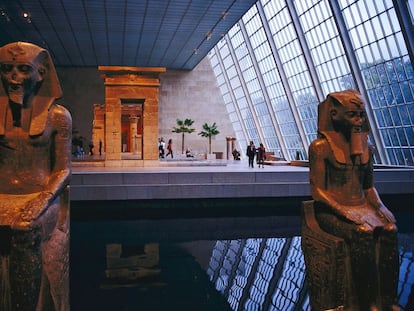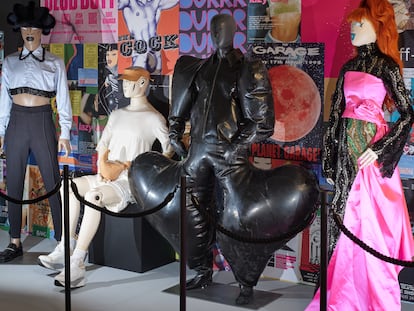‘Women Dressing Women’: The Metropolitan Museum of Art’s tribute to a century of great female designers
The Costume Institute at the New York museum celebrates its fall exhibition, a showcase of 80 works by over 70 women designers that traces the history of fashion over the last century
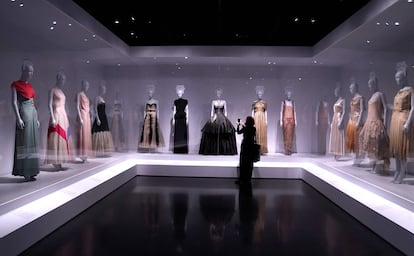

The Costume Institute’s fall exhibit at New York’s Metropolitan Museum of Art (Met) pays homage to female creation. Women Dressing Women is a statement of intent that starts with the exhibit’s very first panel. Women designers, artisans and artists have covered the female universe with their designs and different visions of women, always making them protagonists, sometimes turning them into objects but never passive subjects when it comes to clothing. Over 80 outfits from the Institute’s permanent collection are on display, and the exhibit covers the fashion industry chronologically, artistically and commercially. The pieces represent the fashion industry’s two main centers, Paris and New York, including names and labels that connect haute couture and street fashion, and the most refined traditions of the Old Continent, American avant-garde and utilitarianism.
The exhibition, which opens on Thursday and will remain on display through March 3, 2024, starts with a selection of black and white photographs, projected in a loop, showing the work of dressmakers, tailors and seamstresses at anonymous workshops between 1907 and 1962. There are also images of the first timid tests for a client and the first private fashion shows in salons at a time when designers didn’t have name recognition, let alone the planetary fame that they have acquired in recent decades (to say nothing of the attention they’ve received in recent years from celebrations like the great annual fashion exhibit at the Met and the museum’s fashion gala, the event of the spring).
This black and white tribute features the precursors of over 70 women designers, who bring dreams to life with their needles and thimbles. The exhibit traces the lineage of the last century’s most influential women-led fashion houses (although only a couple of them remain today, the House of Dior and the House of Chanel). It features the work of pioneers like Adèle Henriette Nigrin de Fortuny and her Venetian textiles; the exquisite Madeleine Vionnet; Spanish designer Ana de Pombo, one of the last at the French fashion house Paquin (1891-1956); and Elsa Schiaparelli, who led her own brand and was perhaps the first designer with name recognition. Indeed, the latter had an exhibition at the Met dedicated to her in 2012, in which she engaged in an imaginary dialogue with her famous compatriot, Miuccia Prada. Big names (Chanel, the aforementioned Miuccia Prada, Marchesa, Rodarte) do appear in the exhibit, but it highlights unknown women and those time has forgotten, as in the selection of ethereal creations from the first decades of the 20th century.
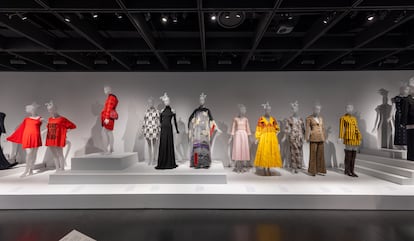
The figure of the designer known by name was forged in the workshops where seamstresses, milliners, apprentices and tailors toiled for decades. As an introductory panel accompanying a selection of anonymous photographs notes, “in the centers of French and European fashion, women’s right to dress other women was a slowly won privilege,” since men dominated the industry. It took a long time for female professionals to gain a foothold, something that happened with the deregulation of the guilds. In the United States, however, this vocation was seen as a natural, industrious extension of domestic responsibilities: after all, sewing was an inherently female occupation.
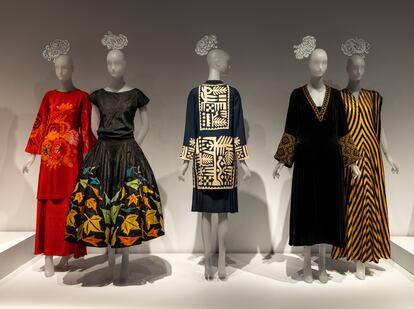
At the press preview of the exhibit on Monday, Max Hollein, the director of the Met, explained that fashion created by women has helped empower women, as well as the designers themselves. “This exhibition invites reflection on the vital contribution women have made to fashion from the early 20th century to the present by amplifying historically undervalued voices and celebrating the celebrity they have achieved. The garments on display exemplify the countless women whose contributions were, and continue to be, the lifeblood of the global fashion industry as we know it today.”
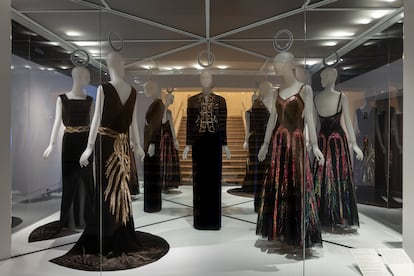
Andrew Bolton, the world’s most influential fashion curator, senior curator at the Costume Institute and the righthand man of Anna Wintour (the all-powerful fashion Vogue editor and architect of the Met fashion gala), also spoke at the press preview of the exhibit. He noted that “women have been central to the success of the Costume Institute since its inception. Its founders include several inspiring women; that’s why the Institute remains dedicated to celebrating women’s artistic, technical and social achievements. They are part of fashion history.”
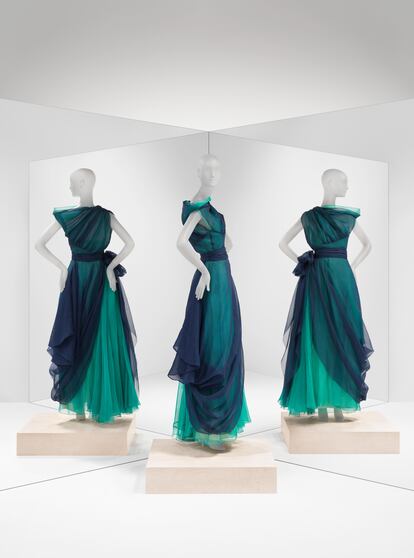
For Mellissa Huber, associate curator at the Costume Institute, the fall exhibition offers an opportunity to “learn the crucial stories of groundbreaking women designers who played a pivotal role in the conception of fashion as we know it. Women’s contributions to fashion cannot be quantified, but our intention with this show is to celebrate the Costume Institute’s permanent collection, which represents the rich history of Western fashion.” As Hollein emphasized, fashion is a symbol of female power and emancipation but also the result of tremendous collective work. Historically, conceptually and commercially, fashion is also the triumph of social progress, a powerful vehicle for women’s social, financial and creative autonomy. As Ted Pick, the co-chairman of Morgan Stanley, a sponsor of the exhibit’s luxurious catalog, points out, “the milestone that three Parisian haute couture fashion houses—Chanel, Dior and Iris van Herpen—are run today by powerful women” cannot be overlooked.

“The common thread that connects different generations of professional women reveals how subsequent generations have built on and expanded the legacy of their predecessors. The exhibit reflects the intergenerational dialogue between these designers in historical perspective and the talented women who worked with them from a contemporary point of view,” explains Karen Van Godtsenhoven, a co-curator of the exhibition. Indeed, to cite just one example of these silent conversations between the pieces on display, there is the direct thread between Fortuny’s characteristic pleating and Comme des Garçons’ textile origami; the austere scenography makes the connection stand out and reveals the continuum mentioned by the experts who organized the show. There’s a similar connection between Vivienne Westwood’s conceptual punk and the groundbreaking dress with pieces of metal inserted in silk with which the house Vionnet reinterpreted the syntax of ancient Greek ceramic painting in 1924: tradition as modernity and vice versa, along with the eternal aspect of fashion and art.
Indeed, to see one example of this legacy, look at the heads of the mannequins wearing the dresses in the pioneers’ room (the first room in the exhibit): they are topped with the enduring forms of classical Greek columns.
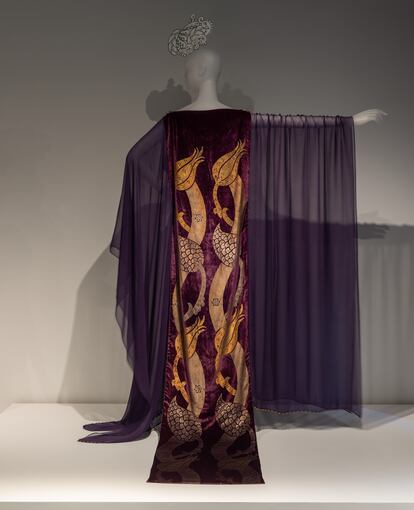
Sign up for our weekly newsletter to get more English-language news coverage from EL PAÍS USA Edition
Tu suscripción se está usando en otro dispositivo
¿Quieres añadir otro usuario a tu suscripción?
Si continúas leyendo en este dispositivo, no se podrá leer en el otro.
FlechaTu suscripción se está usando en otro dispositivo y solo puedes acceder a EL PAÍS desde un dispositivo a la vez.
Si quieres compartir tu cuenta, cambia tu suscripción a la modalidad Premium, así podrás añadir otro usuario. Cada uno accederá con su propia cuenta de email, lo que os permitirá personalizar vuestra experiencia en EL PAÍS.
¿Tienes una suscripción de empresa? Accede aquí para contratar más cuentas.
En el caso de no saber quién está usando tu cuenta, te recomendamos cambiar tu contraseña aquí.
Si decides continuar compartiendo tu cuenta, este mensaje se mostrará en tu dispositivo y en el de la otra persona que está usando tu cuenta de forma indefinida, afectando a tu experiencia de lectura. Puedes consultar aquí los términos y condiciones de la suscripción digital.
More information
Archived In
Últimas noticias
Maduro pleads not guilty before the federal court in New York: ‘I am still the president of Venezuela’
A new test can detect Alzheimer’s from a finger prick
UN team enters Sudanese city of El Fasher after paramilitary massacre: ‘It’s like a ghost town’
A recipe for resistance: Indigenous peoples politicize their struggles from the kitchen
Most viewed
- Gilles Lipovetsky: ‘If you want to live better and fall in love, take Prozac, don’t look to philosophy’
- Alain Aspect, Nobel laureate in physics: ‘Einstein was so smart that he would have had to recognize quantum entanglement’
- Alvin Hellerstein, a 92-year-old judge appointed by Bill Clinton, to preside over Maduro’s trial in New York
- Why oil has been at the center of Venezuela-US conflicts for decades
- Maduro’s downfall puts China’s relationship with Venezuela to the test
